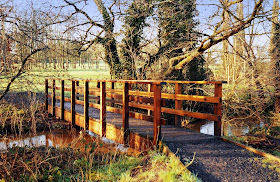Looking at the Nikon F6 you'd never know this wasn't a DSLR. It was the template for Nikons cameras such as the D1, D2 etc. It even has a built in data back which can record basic metadata and even imprint it onto the film. Now I'm not interested in that, but I wanted a new camera for the warranty etc. and the fact that I'm planning to be using it in the years to come. Some might be surprised that Nikon are still making these, but they are. However there is probably no guarantee that they will keep making them.
I did have a S/H F6 before but the frame spacing was a bit out, so I sold it. Nothing major and the buyer was happy but it annoyed me and made scanning more tricky, since I scan strips of 6 developed colour negatives. As you might imagine, unlike digital cameras it is the film and lenses that make the real difference to the image, but with the F6 I know that exposure, shutter speed and everything else required to produce the basis good image are all done in camera.
These days shooting with film isn't what it used to be. In my early days of picture library work I sent original slides to the libraries, so I ended up shooting several identical images. In those days slide / transparency film was reckoned to be the best quality for print reproduction. However now shooting on film for libraries means digitising the image, so it's become a film / digital hybrid. There has also been a small renaissance in film and libraries like it, as do clients. But having to compete with digital and the huge sensors now available means that producing a file of around 10MP (reckoned to be the limit of film) is not really big enough.
So over the last few weeks I've been working to get my digitised film scans larger in size, with the least amount of grain possible while still retaining good sharpness. So in real terms I've had to get serious about it. Now medium format works, but I wanted to shoot on 35mm film for all sorts of reasons. It's also important to show a distinct 'film look' otherwise there is no point to it. So after a lot of experimentation I've settled on Kodak Ektar 100 Colour negative film and worked out a scanner / photoshop workflow that allows me to produce digitised film files of between 18-20 MP's. Big enough for good quality A3 print reproduction.
Getting a good original is essential and that is another reason why I bought the F6, since it produces excellent negatives which scan very well. This allows me to get pleasing results which are also commercially successful as well. I imagine many people think 'Why Bother' but aside from the fact that I enjoy the whole process and like the different look, there is a market for this retro kind of photography. And since it isn't cheap, that means that I can justify the expense.








